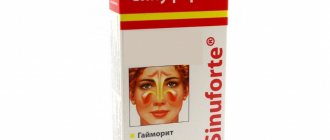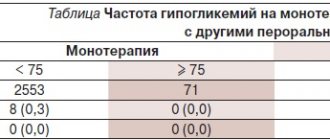Gidazepam is a medication that doctors prescribe as a tranquilizer for seizures. A distinctive feature of Gidazepam from other tranquilizers is that it has an activating effect, rather than a sedative and relaxing effect.
It is a benzodiazepine and has an effect on the central nervous system of the body. Gidazepam has a number of indications and contraindications . It is prescribed strictly on the recommendation of the attending physician, but it is not difficult to buy Gidazepam without a prescription at the pharmacy.
Pharmacological properties of the drug Gidazepam IC
Pharmacodynamics. Gidazepam IC belongs to the group of benzodiazepine derivatives. It has an original spectrum of pharmacological activity, in which the anxiolytic effect is combined with an activating and antidepressant effect with little side effects and low toxicity. It has the properties of a daytime tranquilizer and selective anxiolytic. It differs from other benzodiazepines by the presence of a pronounced activating effect and a weak muscle relaxant effect. In average therapeutic doses it does not have a hypnotic effect and does not contribute to rapid fatigue during operator activities. In patients with alcoholism during the period of therapeutic remission, mild tranquilizing and anxiolytic effects are noted already in the first days of using the drug; the severity of psychomotor agitation, anxiety and irritability has significantly decreased. The most effective use of the drug is for manifestations of withdrawal syndrome and for maintaining remission in patients with chronic alcoholism. Pharmacokinetics. When administered orally, gidazepam is rapidly absorbed. After a single dose, the effect of the drug developed within 30–60 minutes, reaching a maximum within 1–4 hours, after which its severity gradually decreased. The maximum concentration of gidazepam is observed in the liver, kidneys and adipose tissue. Bioavailability is quite high. It has been established that only the dealkylated metabolite is detected in human blood plasma; the unchanged drug is not detected even in trace amounts. A feature of the pharmacokinetics of gidazepam is the low rate of elimination of its main metabolite after a single dose. The half-life from blood plasma is 86.7 hours, clearance is 3.03 l/h, the time to determine the concentration of the drug in the blood is 127.32 hours. The pharmacokinetics of gidazepam make it possible to use it as a tranquilizer with a low risk of side effects.
Consequences of use
The consequences of using Gidazepam include not only withdrawal symptoms (drug withdrawal), but also psychological changes.
When the desire to use prevails, the addict cannot control his actions , he experiences depression, aggression, emotional swings, irritability, mental disorders, and obsessive thoughts.
The problems that a drug addict faces begin at the moment when Gidazepam does not bring pleasure , but rather causes physical pain and psychological discomfort.
Use of the drug Gidazepam IC
Prescribed orally, taken without chewing 20–50 mg 3 times a day, if necessary, gradually increasing the dose in the range of 50–200 mg/day until a therapeutic effect is obtained. The most optimal use is in a daily dose of 100 mg; administration in higher daily doses (150–200 mg) is accompanied by increased daytime sleepiness and a feeling of muscle weakness. As a daytime tranquilizer, Gidazepam IC can be used to treat conditions with asthenic, depressive, phobic and hypochondriacal disorders in doses of 60–120 mg/day. The average daily dose of the drug in the treatment of patients with neurotic, neurosis-like, psychopathic, psychopath-like conditions is 60–200 mg; for migraine - 40–60 mg. To relieve alcohol withdrawal, the initial dose of Gidazepam IC is 50 mg, the average daily dose is 150 mg. The maximum daily dose for these conditions is 500 mg. The duration of the course of therapy - from several days to 1-4 months - is determined by the doctor individually depending on the patient’s condition and the course of the disease. The drug can be used in outpatient practice.
Addiction treatment
Treatment of addiction to Gidazepam at Dr. Vasilenko’s medical center is a necessary measure to eliminate the consequences of chronic poisoning of the body with toxic substances, get rid of withdrawal symptoms, and also give up drug use forever.
The course of drug addiction treatment is selected individually for each person after examination by a narcologist and other doctors. To cope with the problem of drug addiction, you need to overcome denial and trust chemical dependency specialists. If you don’t know how to stop using Gidazepam, consult the doctors at Dr. Vasilenko Medical Center.
Author:
Dmitry Nikolaevich Lazebny
Special instructions for the use of Gidazepam IC
It is necessary to limit the use of gidazepam in persons with open-angle glaucoma, chronic renal failure and chronic liver failure, alcoholic liver damage. During pregnancy and breastfeeding. The drug should not be used during the specified period. Children. The use of the drug in children under 18 years of age is contraindicated. Impact on the ability to drive vehicles and operate other machinery. During treatment, it is necessary to refrain from activities that require increased attention and speed of psychomotor reactions.
Overdose
An overdose of Gidazepap is possible in case of simultaneous use of the drug with alcohol or other psychotropic drugs. In case of overdose, you may notice symptoms such as dizziness, nausea, vomiting, headache, convulsions and muscle spasms.
In case of an overdose of Gidazepam, you must contact the specialists of Dr. Vasilenko’s medical center to avoid the consequences of use and remove toxic substances from the body. You can call a narcologist to your home for detoxification, consultation and drawing up an individual treatment plan for Gidazepam addiction.
Gidazepam Vic Viva Pharm 50mg TB sublingual No. 10
Tradename
Gidazepam VIC
International nonproprietary name
No
Dosage form
Pills
Compound
One tablet contains
active substance: gidazepam 20 mg or 50 mg;
excipients: lactose monohydrate, potato starch, calcium stearate, povidone.
Description
Tablets are white or creamy in color, flat-cylindrical in shape with a bevel, with a logo on one side.
Pharmacotherapeutic group
Psychotropic drugs. Anxiolytics. Benzodiazepine derivatives.
ATX code N05BA
Pharmacological properties
Pharmacokinetics
When taken orally, gidazepam is rapidly absorbed. After taking single doses, the effect of the drug appears after 30-60 minutes, reaching a maximum within 1-4 hours, followed by a gradual weakening. Gidazepam is most fully distributed in the liver, kidneys and adipose tissue. Biological availability is quite high. It has been shown that only the dealkylated metabolite is recorded in the blood plasma; the unchanged drug is not detected even in trace amounts.
A feature of the pharmacokinetics of gidazepam is the low rate of elimination of its main metabolite after a single dose. The half-life from blood plasma is 86.7 hours, clearance is 3.03 l/hour, MRT is 127.32 hours.
The pharmacokinetic characteristics of gidazepam make it possible to use it as a tranquilizer with a reduced risk of side effects.
Pharmacodynamics
Gidazepam belongs to the group of benzodiazepine derivatives. It has an original spectrum of pharmacological activity, combining anxiolytic and stimulating effects with antidepressant components with few side effects and low toxicity. It has the effect of a “daytime” tranquilizer and selective anxiolytic. It differs from other benzodiazepines in having a pronounced activating effect and a weak muscle relaxant effect. In moderate therapeutic doses it does not have a hypnotic effect and does not contribute to rapid fatigue during operational activities.
In patients with alcoholism during the period of therapeutic remission, mild tranquilizing and anxiolytic effects are observed already in the first days of prescribing the drug; psychomotor agitation, anxiety and irritability are significantly reduced. The drug has the greatest effect on the manifestations of withdrawal syndrome and during remission in patients with alcoholism.
Indications for use
Used as a daytime tranquilizer for:
- neurotic, psychopathic asthenia;
- conditions that are accompanied by anxiety, fear (including before surgical interventions and painful diagnostic examinations);
- increased irritability;
— sleep disturbance;
- emotional lability;
- also for relieving withdrawal symptoms in alcoholism and as maintenance therapy during remission in chronic alcoholism, logoneurosis, migraine.
Directions for use and doses
Gidazepam VIC tablets are taken orally.
Take without chewing 20-50 mg 3 times a day, if necessary, gradually increasing the dose in the range from 50 to 200 mg per day until a therapeutic effect is obtained. A course dose of 100 mg per day is optimal. The use of higher daily doses (150-200 mg) may be accompanied by increased daytime sleepiness and a feeling of muscle weakness.
As a daytime tranquilizer, Gidazepam VIC can be recommended for the treatment of conditions with asthenic, depressive, phobic and hypochondriacal disorders in doses of 60-120 mg per day.
The average daily dose of the drug for the treatment of neurotic, neurosis-like, psychopathic, psychopath-like conditions is 60-200 mg; for migraine – 40-60 mg.
To relieve alcohol withdrawal, the initial dose is 50 mg, the average daily dose is 150 mg. The highest daily dose for these conditions is 500 mg.
The duration of the course of therapy is from several days to 1-4 months and is determined by the doctor individually depending on the patient’s condition and the course of the disease.
The drug can be used in outpatient practice.
Side effects
When using gidazepam in large doses or with increased individual sensitivity, some patients may experience phenomena characteristic of other tranquilizers - benzodiazepine derivatives.
- drowsiness, lethargy, decreased reaction speed, decreased attention and performance
- muscle weakness
- rashes, itching, skin hyperemia, urticaria
- allergic reactions, including angioedema
Other: ataxia (a case of ataxia has been reported in a patient that coincided with the use of hydrazepam)
If adverse reactions occur, the dose should be reduced or discontinued.
Contraindications
- hypersensitivity to any of the components
- severe myasthenia gravis
- liver dysfunction (cirrhosis, Botkin's disease)
- renal dysfunction
- children under 18 years of age
Drug interactions
The drug is compatible with other psychotropic, hypnotic and anticonvulsant drugs. Gidazepam potentiates the effect of phenamine, 5-hydroxytryptophan, enhances the effect of alcohol, sleeping pills, neuroleptics, and narcotic analgesics.
special instructions
The use of gidazepam should be limited to persons with open-angle glaucoma, chronic renal or liver failure, and alcoholic liver damage.
The drug contains lactose, so it should not be prescribed to patients with rare occasional forms of galactose intolerance, lactase deficiency or glucose-galactose malabsorption syndrome.
Pregnancy and lactation
Do not use the drug during pregnancy or breastfeeding.
Children
The use of the drug in children is contraindicated.
Features of the effect of the drug on the ability to drive a vehicle or potentially dangerous mechanisms
During treatment with gidazepam, you should refrain from activities that require increased attention and speed of reaction.
Overdose
Side effects characteristic of other benzodiazepine tranquilizers may occur - drowsiness, lethargy, dizziness, nausea, mild ataxia, allergic reactions. In these cases, you should reduce the dose of the drug or stop taking it.
Treatment: symptomatic therapy.
Release form and packaging
10 tablets are packed in a blister pack made of polyvinyl chloride and aluminum foil.
1 (for a dosage of 50 mg) or 2 (for a dosage of 20 mg) packages together with instructions for medical use in Kazakh and Russian are placed in a cardboard box.
Storage conditions
Store at a temperature not exceeding 25°C.
Keep out of the reach of children!
Shelf life
2 years.
Do not use the drug after the expiration date.
Conditions for dispensing from pharmacies
On prescription.



